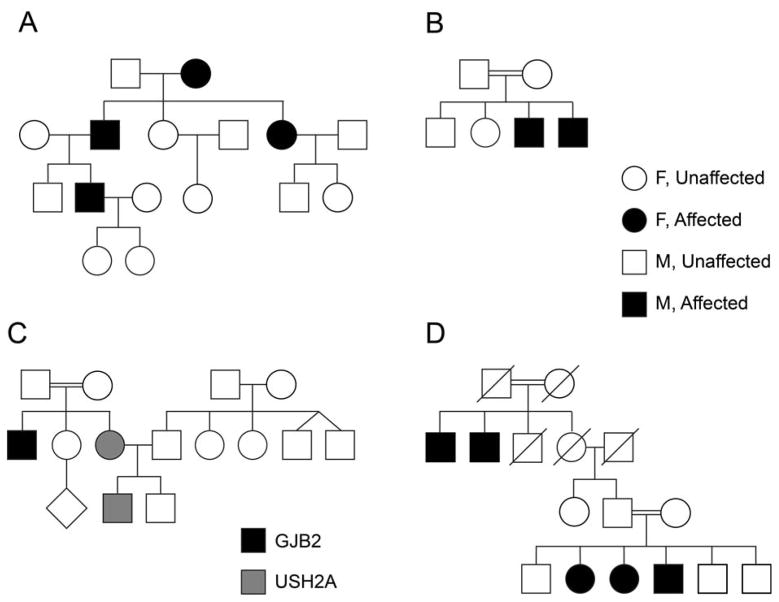Fig. 3.
Representative pedigrees of families with HL. (A) Recessive inheritance with no previous family history. After biallelic variants were found in the child, the parents were each found to be carriers of the variant, validating the recessive pattern of inheritance. (B) Recessive inheritance with family history. The family represented in the pedigree presented with symptoms of USH1, with five affected individuals. The chromosomal critical region was defined by the use of microsatellite DNA markers, pinpointing the locus to chromosome 15q2286. Several years later, CIB2 was found to be the pathogenic variant responsible for this new form of Usher syndrome, USH1J32. (C) Dominant inheritance, with an affected individual in three out of four generations, which may be observed for Waardenburg syndrome with a PAX3, SNAI2 or MITF mutation. (D) A family with both SHL and NSHL. Two patients have Usher syndrome type II, with pathogenic variants in the USH2A gene. One patient has NSHL, due to biallelic pathogenic variants in the GJB2 gene111.

